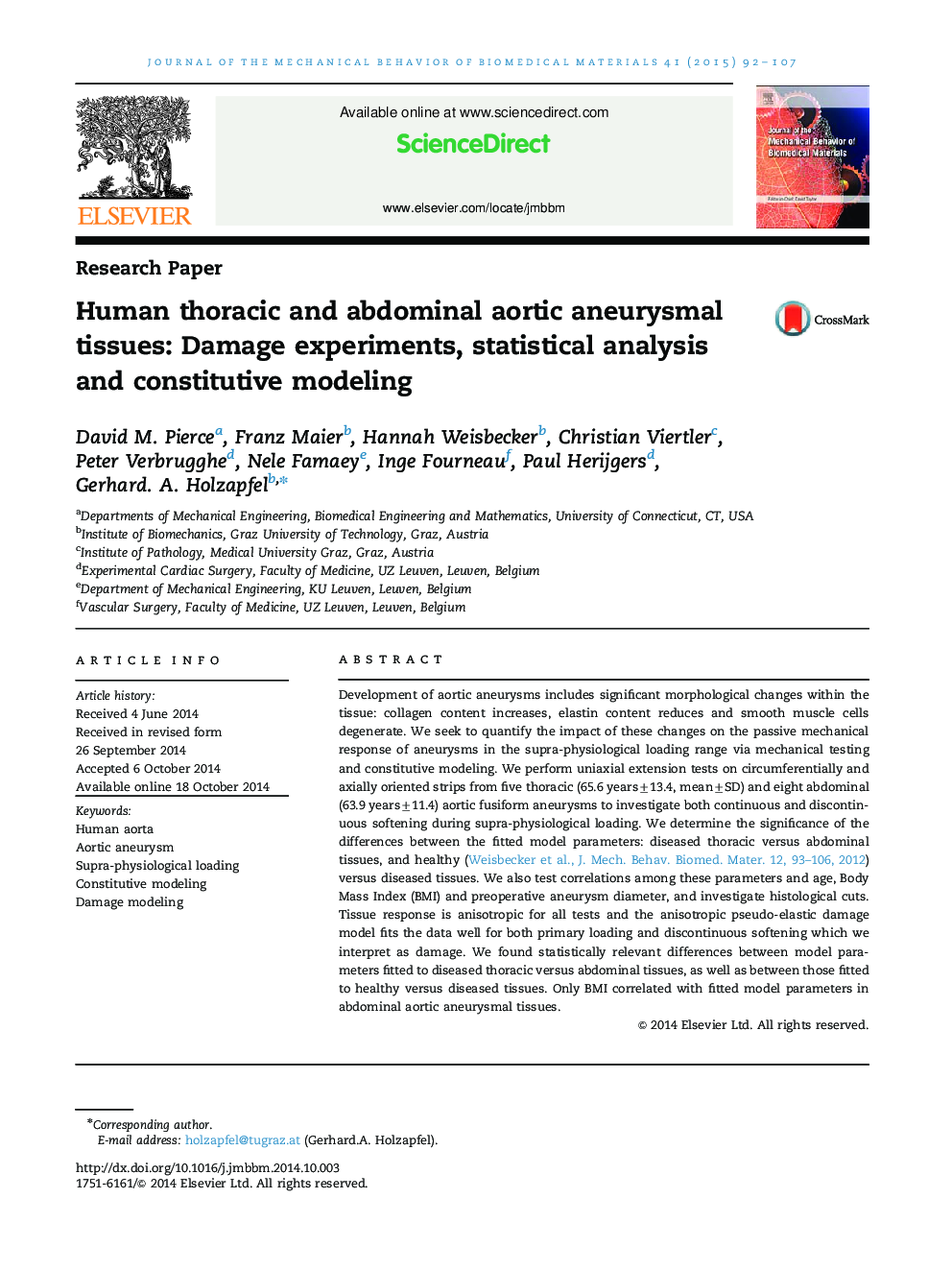| Article ID | Journal | Published Year | Pages | File Type |
|---|---|---|---|---|
| 7208551 | Journal of the Mechanical Behavior of Biomedical Materials | 2015 | 16 Pages |
Abstract
Development of aortic aneurysms includes significant morphological changes within the tissue: collagen content increases, elastin content reduces and smooth muscle cells degenerate. We seek to quantify the impact of these changes on the passive mechanical response of aneurysms in the supra-physiological loading range via mechanical testing and constitutive modeling. We perform uniaxial extension tests on circumferentially and axially oriented strips from five thoracic (65.6 years±13.4, mean±SD) and eight abdominal (63.9 years±11.4) aortic fusiform aneurysms to investigate both continuous and discontinuous softening during supra-physiological loading. We determine the significance of the differences between the fitted model parameters: diseased thoracic versus abdominal tissues, and healthy (Weisbecker et al., J. Mech. Behav. Biomed. Mater. 12, 93-106, 2012) versus diseased tissues. We also test correlations among these parameters and age, Body Mass Index (BMI) and preoperative aneurysm diameter, and investigate histological cuts. Tissue response is anisotropic for all tests and the anisotropic pseudo-elastic damage model fits the data well for both primary loading and discontinuous softening which we interpret as damage. We found statistically relevant differences between model parameters fitted to diseased thoracic versus abdominal tissues, as well as between those fitted to healthy versus diseased tissues. Only BMI correlated with fitted model parameters in abdominal aortic aneurysmal tissues.
Related Topics
Physical Sciences and Engineering
Engineering
Biomedical Engineering
Authors
David M. Pierce, Franz Maier, Hannah Weisbecker, Christian Viertler, Peter Verbrugghe, Nele Famaey, Inge Fourneau, Paul Herijgers, Gerhard. A. Holzapfel,
